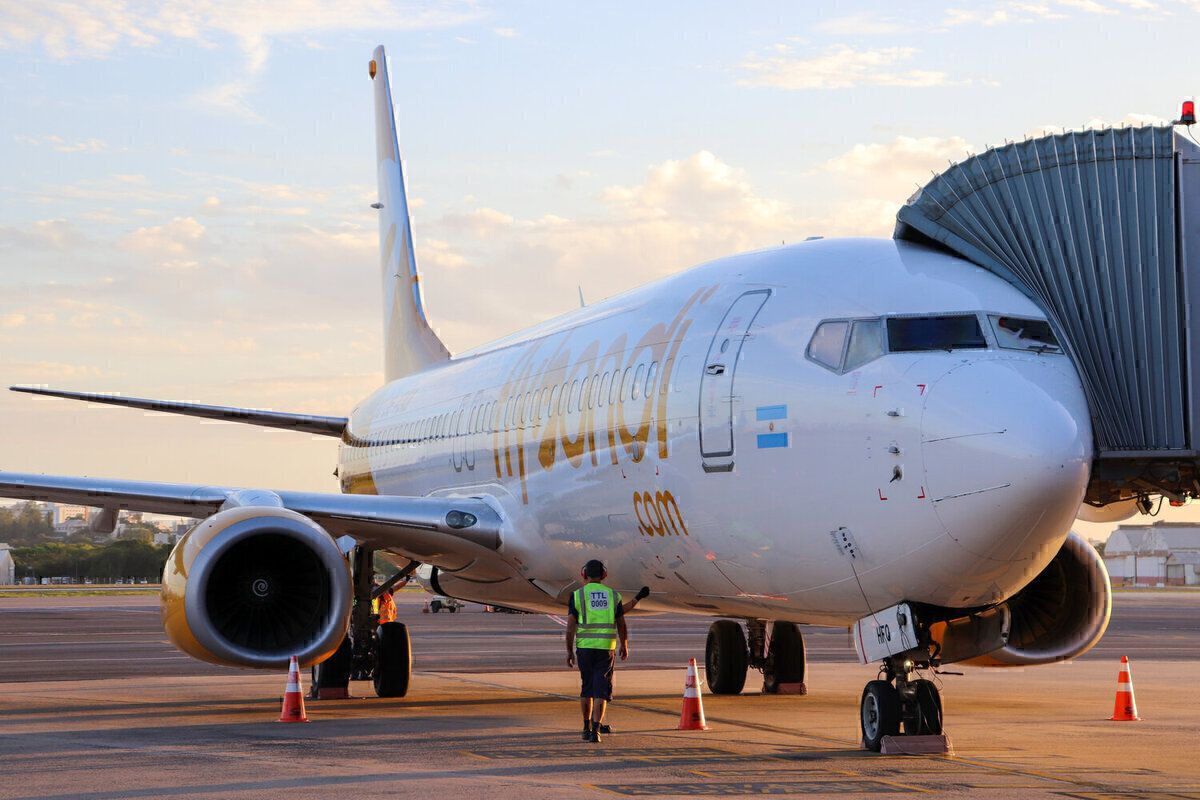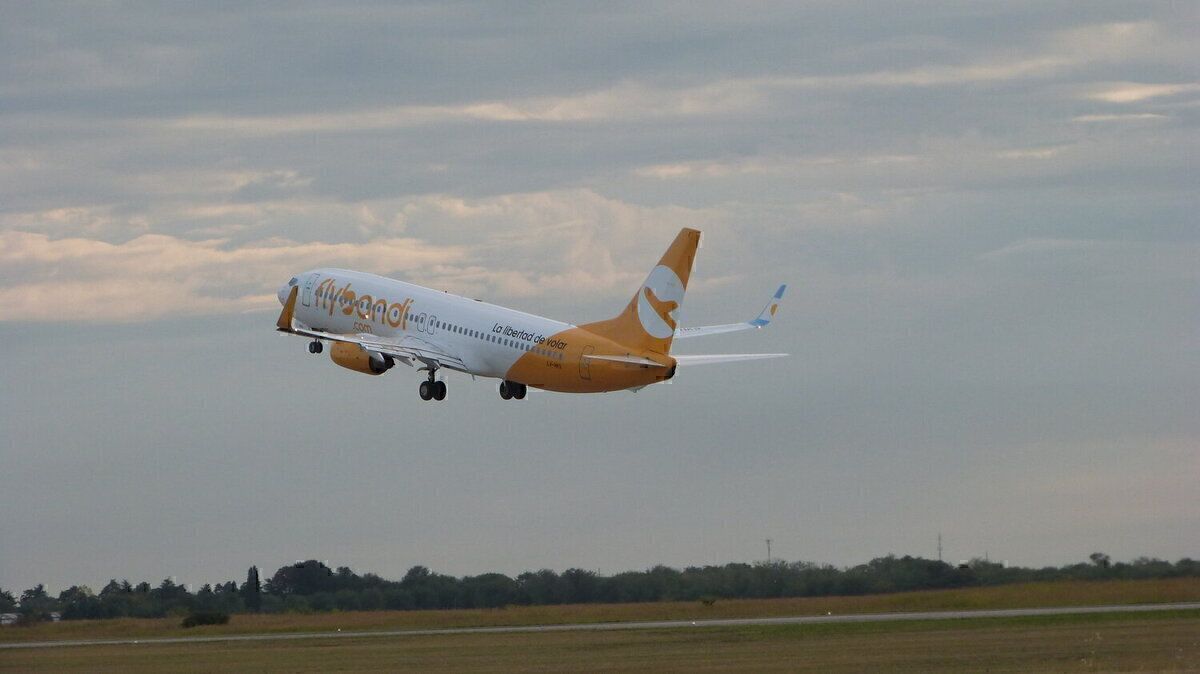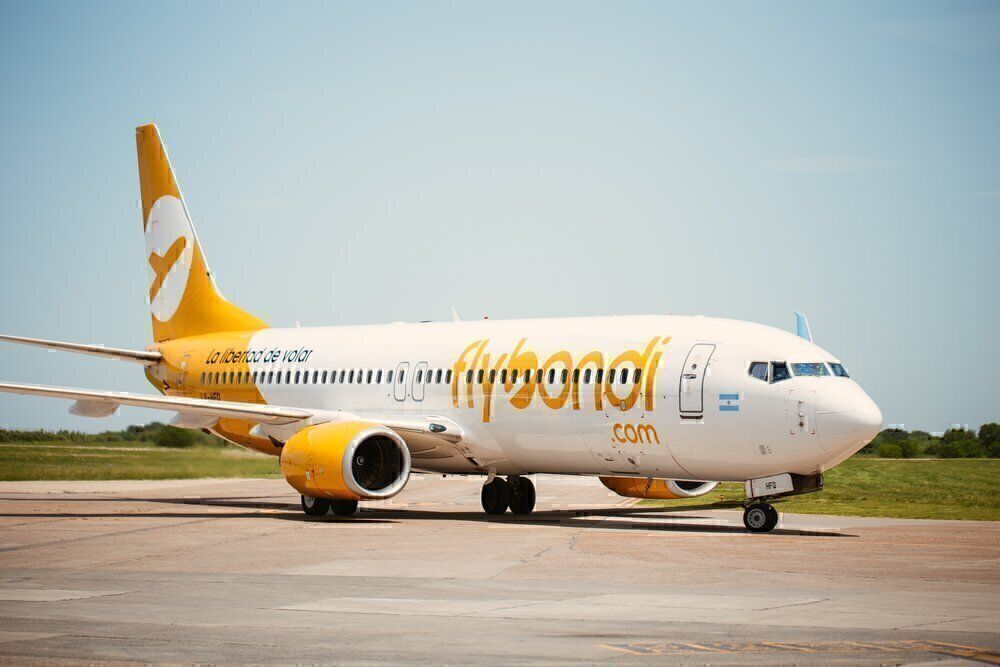The Argentinian low-cost carrier Flybondi no longer has a fleet of aircraft in Argentina. The last of its planes in Argentina, a Boeing 737-86J registration LV-HFR, left the country on 14 November. But, what does it mean for the future of the airline? Let’s investigate further.
Why is Flybondi not flying?
Flybondi is a young airline. It started flying in 2017 under a low-cost model, trying to compete with local powerhouses Aerolíneas Argentinas, LATAM, and Austral. To do it, Flybondi decided to operate from El Palomar International Airport.
This airport is the third most important for the Argentinian capital, after Ezeiza International Airport and Jorge Newbery Airfield. Flying out of El Palomar brought Flybondi lower costs. It shared the runway with another low-cost carrier, the Chilean JetSMART.
Between January and October 2019, El Palomar had 1.416 million passengers. Now, due to COVID-19, the airport has had 412 thousand passengers, a 70.90% decrease over the course of the year.
Moreover, the Argentinian Government shut all commercial flying operations from El Palomar and Jorge Newbery in April. Since then, it hasn’t lifted the prohibition, leaving Ezeiza as the only entry point into Buenos Aires. The Government gave access to the two low-cost carriers to Ezeiza at lower costs. JetSMART agreed to shift its operations to Ezeiza temporarily. But Flybondi didn’t.
Flybondi went to the Argentinian justice, asking for the reopening of El Palomar. The judge said no. In the meantime, Flybondi has played a tug of war with the Government by not flying and threatening massive layoffs, according to local media. The airline even published a statement called El Palomar o nada (El Palomar or nothing else).
And, what happened to the fleet?
At the start of the year, Flybondi had a fleet of five Boeing 737-800 NG in Argentina. Currently, it has none. When the pandemic started, Flybondi decided to return three of its airplanes to the leasing companies.
One of the two remaining planes is currently parked in the US. Meanwhile, the LV-HFR Boeing 737-800 aircraft recently flew from Buenos Aires to Guayaquil. Then, from the Ecuadorian city, it flew to Mexico City. It is currently receiving a C Check maintenance at Mexicana MRO.
The C Check happens every 18 months to two years, depending on the type of aircraft. It takes approximately three weeks. Then, it is expected that the plane will come back to Argentina.
Stay informed: Sign up for our daily aviation news digest.
What will happen with Flybondi?
In October, Flybondi transported only 65 passengers, with a load factor of 9%. The carrier’s business is completely broken down at the moment.
Moreover, if it wants to fly, it will have to comply, for now, with what the Argentinian Government is forcing it to do: operating at Ezeiza.
Flybondi, along with JetSMART, has a tough recovery road ahead. Both carriers are economically dismantled after not being able to fly for more than seven months. Meanwhile, Aerolíneas Argentinas and Austral will merge, gaining more than 80% of the domestic market share.
The low-cost carriers should be able to compete for the gap left by LATAM Argentina after it ceased operations. But, in reality, Aerolíneas Argentinas has the upper hand to consolidate Argentinian aviation’s virtual monopoly. It will be very hard for Flybondi and JetSMART to compete in the short term.
Did you ever travel with Flybondi? How was it? Let us know in the comments.



